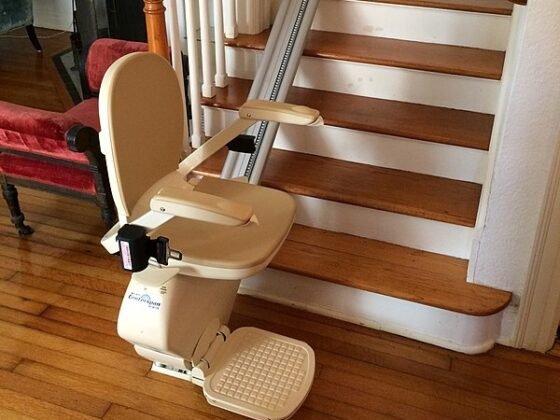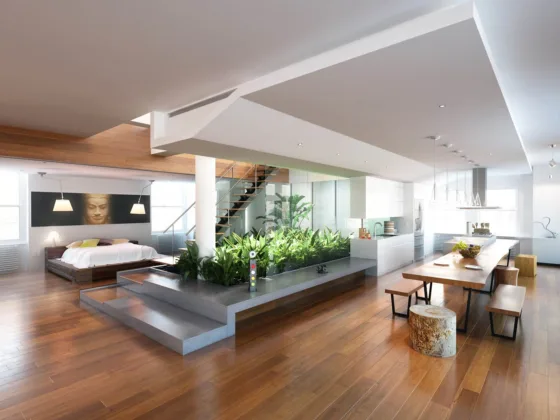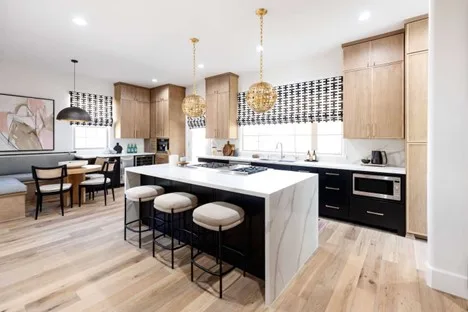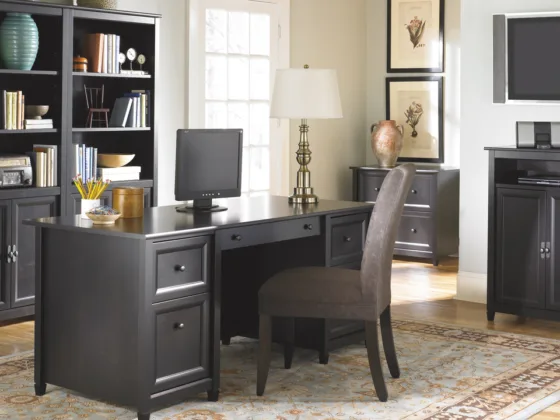Table of Contents Show
No matter how large or small your home is, you can always find a place for a library there.
In this article, you’ll discover practical recommendations on how to arrange a comfortable space for storing and reading books.
If you have books in your house or apartment, you might want to create a dedicated library for them.
A beautifully arranged collection of old-school printed books will add charm to the premise.
When friends come to see you, they will be tempted to flip through the pages of the volumes and take pictures in such an Instagrammable setting.
In this article, you’ll find a step-by-step plan on creating a home library without third-party help and at any budget.

Select the Location
If there is a spare room in your house, that would be great. Otherwise, you might consider establishing a small library under an indoor staircase or in the corner of your kitchen.
Rooms with wasted spaces are ideal for libraries because you won’t need to move any objects around.
Beware of attics and basements: their naturally high levels of humidity might ruin your books. Mold might grow on leather and paper covers.
Plus, there might be pests and insects there. Another damaging factor is natural lighting you should never expose your books to direct sun rays for too long.
Finally, you should make sure that your library will be equally accessible for all your family members, including seniors and children (if the latter are allowed).
Read Also:
Choose the Shelves
Instead of shelves, you might want to use old trunks, wooden cartons, or whatever you have in your storage room.
Yet these alternative approaches would work only if your library is not too large. If you have hundreds or thousands of books, you should opt for thick shelves.
A 36″ long shelf should be at least 1″ thick. If it’s longer, it needs to be thicker to prevent sagging.
For greater stability, you might want to divide your horizontal shelves into sections.
If you prefer custom-made shelves, you might prefer to make them adjustable to be able to use every single inch of the space.
Probably, you have a lot of free space just below the ceiling area in every room. Why not put bookshelves there? That would become an unusual design accent.
You can store those books under the ceiling that you don’t need to read too often.
To protect your collection, you might opt for covering the shelves with dust film.
Otherwise, you can cover up those sections of the library that you don’t want visible with floor-length curtains.
Create a Space for Reading
If you lack space, you might create a library to store books there — and read them in some other space.
But if you can put a modern armchair by Pianca, Bonaldo, Cierre, Gamma Arredamenti, or other top-end manufacturers next to the shelves, that would be amazing.
Beautiful and comfortable seating comes in especially handy for cross-referencing and prompt returning of books.
Besides, those members of your family who have never been particularly fond of reading might start to spend more time in the library.
The seats shouldn’t directly face sources of bright light to prevent glare to your eyes.
Instead, try to install chairs and armchairs directly below sources of light (preferably artificial).
To avoid shadows being cast on the book you’re reading, consider placing smaller additional sources of light nearby such as dimmed wall lamps or desk lamps.
The best table for a library is the one that has large drawers. There, you can put books that you rarely consult.
If you like audiobooks, place a computer on the table or put a small portable player with headphones somewhere on the shelves.
Add Simple Decorations
Mind that your home library is not an academic space. Throw a few fluffy pillows in for good measure and consider the following decor ideas that can easily fit any interior.
- Put an analog clock on the shelf
- Hang a poster on the wall
- Get some scientific apparatus on your table
- Buy a glass cabinet to display some eye-catching items
Flower vases and small decorative items can nicely fill in any leftover space on the shelves.
As you buy more books, you’ll be able to easily relocate your pots elsewhere.
The most popular colors for home library decor are grey, dark blue, dark green, and dark brown. If you opt for a brighter palette, it might distract you from reading.
Examine Your Book Collection
One thing that you should definitely avoid doing is cluttering your library. Do you want to put all your books there? Or do you want to get rid of some part of your collection? Some volumes might need repair.
Thoroughly check your entire collection and sort out only those items that you need indeed.
Arrange Your Books
The four most popular methods of arranging books are:
- Alphabetically
- By subject or genre
- By size
- By color
If you’re planning to actually read the books and not just use them as decor items, it would be reasonable to combine two approaches that are, arrange them alphabetically, by genre or subject.
Arranging by color might be aesthetically pleasing but very impractical. You might need to spend too much time finding a specific book.
Arranging by size makes sense if you have many thick heavy volumes. You might want to put them on the bottom or middle shelves to make reaching them easier.
If you check design blogs, you might have noticed a recent fad known as the “miscellaneous method of book arrangement”.
It means that the spines of books are turned inwards while the sheaves of pages face outward.
That might look impressive on Instagram but is highly unpragmatic in real life.
Also, you might want to keep frequently read books on a special shelf close to the seating.
You’ll be able to quickly access them whenever you wish, without disrupting the whole collection.
Choose from wooden or metal bookshelves, a few kinds of study carrels, library chairs, library tables, shelves, and book trucks to make your library or perusing room an agreeable and current place to learn. You will get library shelving Australia in very competitive price.
Final Thoughts
Hopefully, this article came in handy and inspired you to create a cozy and functional home library.
Once your library is ready, make sure to keep it clean and take all the books off the shelves at least once per year to brush off the dust.









